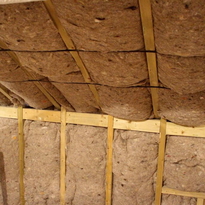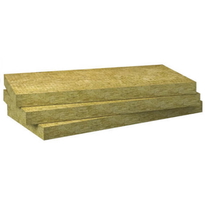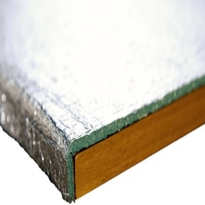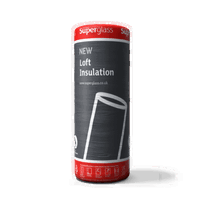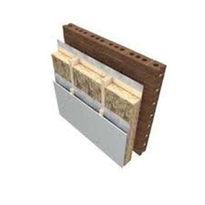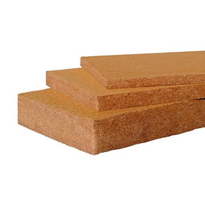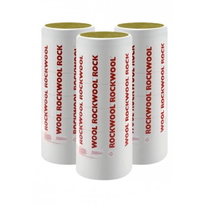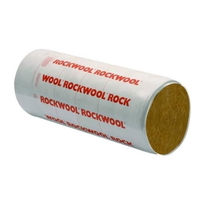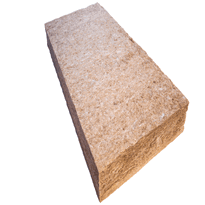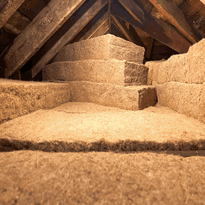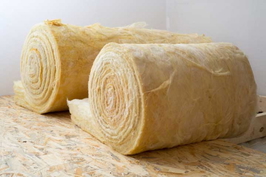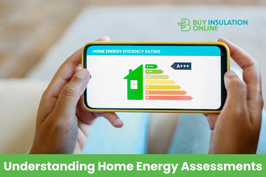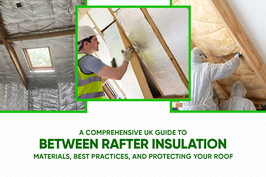Types of Roof Insulation Materials
There’s a range of roof insulation materials available, each with unique characteristics that meet different structural and environmental specifications. Fibreglass insulation is a cost-effective choice and is commonly installed in batts or loose-fill form, providing reliable thermal insulation. Fibreglass is widely used in UK construction due to its affordability and ease of installation. Mineral wool, made from rock or slag, offers excellent thermal and acoustic performance, as well as high fire resistance. Cellulose insulation, produced from recycled materials and treated with boric acid, is an environmentally friendly option with good insulating properties. Rigid foam insulations such as extruded polystyrene (XPS) and polyisocyanurate (PIR) deliver high thermal resistance and moisture resistance, making them suitable for roofing applications. Additionally, spray foam insulation creates an airtight barrier, enhancing overall energy efficiency. These materials are selected based on performance requirements, environmental impact, and budget considerations to ensure compliant roof rafter insulation in the UK.
Insulation Methods for Roof Rafters
Understanding the most effective insulation methods for roof rafters requires careful consideration of the specific structural arrangement, environmental conditions, and desired thermal performance.
Common techniques include installing blanket insulation, which fits between rafters in rolls or batts, offering straightforward application. Rigid foam board insulation provides enhanced structural support and moisture resistance, making it suitable for spaces requiring added durability. These materials are widely used due to their versatility and effectiveness. Spray foam insulation creates an airtight seal, with high thermal resistance and superlative sealing capabilities, often utilised in more advanced installations. Alternatively, mineral wool or glass mineral wool insulation can be used to fill irregular gaps efficiently, reducing air leaks and improving thermal efficiency.
Hybrid systems, which combine these materials, optimise performance by integrating benefits such as moisture control and improved thermal insulation. Proper measurement, ensuring gaps are minimised, and ventilation integration are essential steps to guarantee the effectiveness of the insulation, contribute to long-term energy savings, and sustain indoor air quality.
Benefits of Insulating Roof Rafters
Proper insulation of roof rafters offers numerous tangible benefits that directly contribute to a building’s efficiency and longevity. Insulation significantly enhances energy efficiency by reducing heat transfer through the roof, leading to lower energy bills and more stable indoor temperatures.
It also protects the structure by preventing moisture accumulation, which can cause mould growth, deterioration, and compromise the integrity of the building. Adequately insulated rafters improve overall comfort by minimising draughts and maintaining consistent temperature levels.
Additionally, insulation extends the lifespan of the roof by safeguarding against weather-related damage and decreasing the need for maintenance. From an environmental perspective, insulating roof rafters supports energy conservation and promotes sustainable building practices, aligning with green building standards. Choosing the right insulation type can also improve fire resistance and safety. This comprehensive approach ensures durability, efficiency, and comfort in both residential and commercial properties.
R-Value Considerations for Roof Rafters
K-Values and U-Values Considerations for Roof Rafters
The K-Value or thermal transmittance of insulation measures its ability to resist heat flow through roof components. A lower U-Value indicates better thermal insulation performance, helping to maintain comfortable indoor temperatures and improve energy efficiency.
When selecting suitable insulation for roof rafters, it's vital to consider regional climate conditions, building regulations, and the specific roof construction.
In milder UK climates, such as the south, roof insulation with a U-Value of around 0.16 W/m²K or lower may be sufficient. Conversely, in colder regions, achieving U-Values closer to 0.13 W/m²K or below can significantly reduce heat loss and improve indoor comfort.
Correct insulation selection ensures the minimisation of heat transfer, reduction in heating energy requirements, and overall sustainability of the building.
Furthermore, considerations include existing roof insulation, roof design parameters, and spatial constraints within the roof space. Properly installed insulation can further enhance thermal performance and prevent issues like condensation or thermal bridging.
Compliance with current UK standards and regulations—such as those outlined in Building Regulations Part L—is mandatory to deliver an energy-efficient and compliant roof assembly.
When planning insulation upgrades or new roof constructions, assessing climate zone requirements, retrofit needs, and available space is essential to optimise thermal performance and ensure the durability of the roof structure.
Installation Tips and Challenges
Installing roof insulation demands meticulous preparation and precise measurement to guarantee optimal thermal performance and to avoid potential issues in the future. The initial step involves a thorough inspection of rafters and roof structures for any signs of damage. It's important to clear away debris and check ventilation systems to ensure they promote adequate airflow and prevent moisture accumulation. Uneven insulation distribution can compromise energy efficiency, so measuring cavity sizes accurately is essential for proper fit. Accurate measurement of rafter cavities is crucial. When cutting insulation materials, utilise sharp tools for clean cuts, allowing for slight compression to maximise contact and minimise thermal bridging. Different types of insulation require specific handling techniques: for example, batts should be snugly fitted without compression to maintain their insulating properties, while rigid foam boards need to be securely sealed at the edges to eliminate gaps. Challenges often encountered during installation include working in confined spaces, fitting irregularly shaped bays, and manoeuvring around existing wiring or plumbing. Addressing these obstacles with care is vital. Proper sealing of joints, maintaining ventilation, and adhering to safety precautions are essential to ensuring the insulation performs effectively. These measures not only enhance thermal efficiency but also help prevent future complications such as dampness and mould growth.
Conclusion
Proper insulation of roof rafters enhances energy efficiency by reducing heat transfer and preventing draughts. Selecting appropriate materials with suitable K-values, understanding effective installation techniques, and addressing common challenges ensure optimal performance. Accurate application minimises thermal bridging and air leaks, leading to improved indoor comfort and potential energy savings. Adhering to detailed, methodical procedures guarantees a durable, effective insulation system that supports long-term building integrity and environmental sustainabilit

